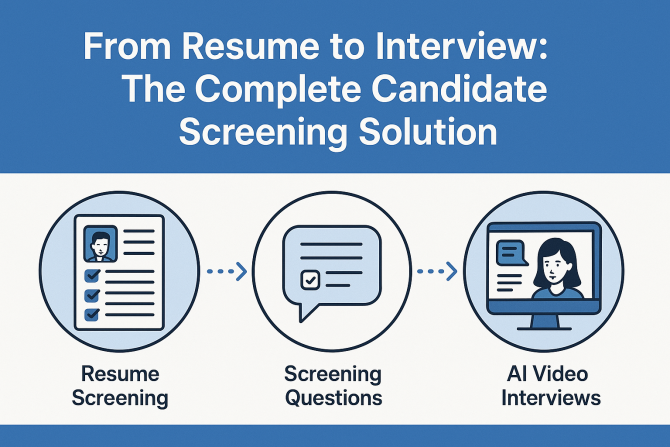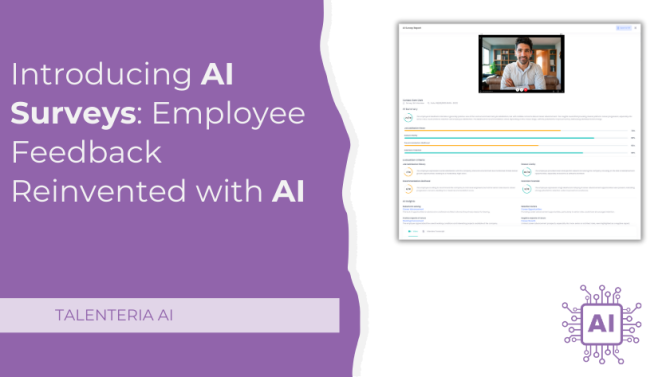
What Are Behavioral Competencies?
The use of behavioral competencies in the workplace is a relatively recent development, dating back to the 1970s. Since then, the behavioral competency framework has proven invaluable to employers in evaluating prospective employees and helping staff identify and develop their skills. This article will explain what behavioral competencies are, how they can be measured, and how Talenteria - a career portal and recruitment marketing platform - can help you make the most of them.
Defining Behavioral Competency
Behavioral competency can be defined as the knowledge, abilities, and behavioral characteristics that enable an individual to perform effectively in the workplace. The ideal employee will possess certain qualities and skills that set them apart from other job candidates—a cocktail of various behavioral competencies that makes them particularly suited for a given role.
For example, when hiring a sales assistant, an employer will seek out personable, persuasive individuals with good communication skills to ensure that customers are put at ease and sales can be clinched. However, when hiring a social media manager, an employer might prioritize other attributes, such as organizational ability and time management skills.
Categories and Examples of Behavioral Competencies
Behavioral competencies can be broken down into five distinct categories: individual, interpersonal, motivational, managerial, and analytical. Below are examples of behavioral competencies from each of these five categories. It is worth noting, however, that any specific personality trait might fall under more than one of them:
- Individual competencies refer to personal characteristics such as decisiveness, initiative, and reasoning skills.
- Interpersonal competencies include a person’s collaboration skills and their ability to communicate with colleagues and resolve conflicts.
- Motivational competencies involve one’s ability to incentivize and motivate others and act as an example for one’s colleagues.
- Managerial competencies include the skills and traits required to manage others successfully, such as decisiveness, people management, and organizational skills.
- Analytical competencies include numeracy skills, data interpretation, and the ability to develop and implement solutions to problems that may arise in the workplace.
These examples of behavioral competencies should not be taken as an exhaustive list. However, they do point to the breadth of skills and behaviors an employer must take into consideration when recruiting.
How to Measure Behavioral Competencies
Measuring behavioral competency presents an interesting challenge: exactly how should one go about it? Unlike sales targets and social media engagement rates, behavioral competencies cannot be tracked and quantified.
Despite this difficulty, however, measuring behavioral competencies is a crucial step in employee recruitment. Different attributes and skills are more critical in certain roles than others. An employer needs to gauge an individual’s abilities by keeping desired competencies in mind during the interview process, asking pointed questions that will help determine how developed they are in the candidate.
Behavioral competencies are just as important beyond the recruitment process. Familiarity with staff’s skills allows employers to help guide them through pointed training exercises, thereby strengthening and developing their employees’ skillsets.
To measure behavioral competencies, an employer should observe and assess the employee’s behavior at work. There are three different kinds of behavior an employer should keep track of:
- People-based behaviors: thoughtful and considerate of others, possessing well-developed communication skills, and an appreciation of other people’s views
- Success-based behaviors: responsible and communicative, displaying effective decision-making and task managing abilities
- Managerial-based behaviors: strives toward an inclusive workplace and mobilizes staff members through positive reinforcement.
An employer should assess these behaviors to evaluate the individual’s behavioral competencies. It may also be prudent to have the employee complete a self-assessment. This should not, of course, be the sole method of assessment. Still, the exercise is beneficial in that it encourages the employee to consider aspects of their performance they could improve upon.
Assessing Behavioral Competencies With Talenteria
As discussed, behavioral competencies are crucial in the recruitment and ongoing evaluation of employees. But given that an individual’s personality cannot be boiled down to numbers and graphs, it can be challenging to handle behavioral competency evaluations.
This is where Talenteria comes in.
Talenteria is a recruitment marketing platform and career site builder that aims to make recruitment more time- and cost-effective. We recognize that one of the most difficult challenges for any business is finding suitable job candidates who have the necessary qualifications and who would also fit in well in the workplace. By producing striking career sites that embody the spirit of a company, Talenteria attracts the interest of such individuals. We also offer free articles on everything from recruitment chatbots to inclusion in the workplace on our blog. The insights these articles offer benefit anyone looking to find out more about recruitment marketing.
Here at Talenteria, we understand the importance of behavioral competencies—and the difficulties inherent in monitoring behavioral competency evaluations. Our all-in-one HR program makes this easier, allowing you to find the right person for the job.





